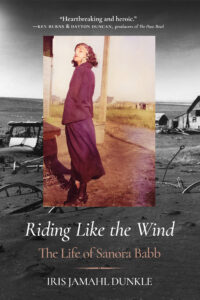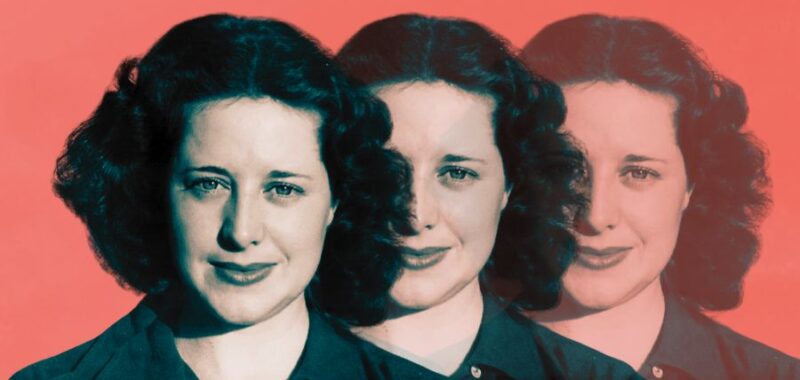You might know Sanora Babb as the wife of the Academy Award-winning cinematographer James Wong Howe. She also had many tantalizing affairs with the likes of Ralph Ellison and Harry Stetson (yes, of the hats). And young writers like William Saroyan and Carlos Bulosan were madly in love with her in the 1920s and 30s. It’s hot, right? You want to know more.
Article continues after advertisement
But how seriously would you take her if this is how I introduced her to you? Would you care as much about the more important hook in her story, that the writer John Steinbeck appropriated material from the field notes she took while working in the FSA camps in California in 1938-9? Or that because he did so, the novel she was writing, Whose Names Are Unknown, which was under contract with Random House, would be dropped just three weeks before publication and wouldn’t be published until 2004 when she was on her deathbed? While his novel, Grapes of Wrath, would go on to win a Pulitzer Prize, taught across American high school classrooms, still an NEA Big Read?
Or how about if I told you that Charmian Kittredge London, after her husband Jack London died, had a brief, but passionate affair with the magician, Harry Houdini. In her diaries, she even called him her “magic lover.” Jack and Charmian also had a lot of sex (as married people might), and Charmian diligently recorded every time (she called their sex “lollies”) in her diaries. Would you care as much about the far more substantial fact that Charmian helped Jack London write many of his famous books and never got credit for it?
These sexual encounters are just a small part of a woman’s life but they often constitute how a woman (and her story) can be completely reduced and belittled. In my biographies about Charmian Kittredge London and Sanora Babb, I write earnestly to resist and challenge the reductionism of defining a woman based on the sex they had with famous men.
Archival violence is a term invented by Jaques Derrida to represent the violence that can be inflicted by archives, especially against marginalized or oppressed people. For example, when you look at the biographies written about the male subjects in London and Babb’s lives, those accounts are almost always written from the perspective of the male gaze. They are, of course, at the forefront of their own biographies, but often women are relegated to obsessive side characters, their parts downplayed or even unwritten.
As a biographer who has written two biographies about women who have been erased or misremembered and someone who writes a weekly newsletter called Finding Lost Voices that features a mini-biography about a woman each week, writing about women is something I am always thinking about. These dilemmas on how to depict a woman so that she is taken seriously and how to navigate the archival violence previously done against her, is something biographers of women must think about.
Emily Van Duyne reminds us in her 2024 biography, Loving Sylvia Plath that “Loving Sylvia Plath has long been essentialized as a young woman’s game, a phase to pass through and grow out of in order to be taken seriously” and that “Plath’s suicide is frequently presented as a capricious choice of a spoiled girl seeking revenge, rather than the culmination of a mental health crisis.” Regardless of these stigmas, Van Duyne took on the tired narrative that’s been cemented around Plath’s life and challenges it to include the sexual and physical violence Plath endured while married to Ted Hughes.
When I spoke to her, Van Duyne brought up the fact that we don’t seem to trust women as the narrators of their own lives. As Helene Cixous so wisely advised in her essay, “The Laugh of the Medusa” “Write yourself: your body must make itself heard” In stories like Plath’s, there is often the suppression of physical violence against the subject because the audience deems the woman not to be an authority on the subject of her own body. In Loving Sylvia Plath, Van Duyne navigates the evidence of Hughes’ violence, evidence that had been there all along. In fact, Plath told us about it in her own words through her diaries, but because her diaries were controlled (and edited) by her abuser, Ted Hughes, after her death, readers didn’t have access until they were published in 2000. Even when scholars saw her documentation of the abuse, Plath’s voice remained one not to believe, as recently as the BBC documentary on Ted Hughes in 2022.
To tell a fuller story of a narrative that has been suppressed, it takes an intentional way of looking in order to see the facts that add up to a different, buried truth. When researching Babb’s story for the last five years, I was able to see that Steinbeck had appropriated Babb’s notes because I was looking at her story through her perspective rather than through Steinbeck’s.
How you portray a famous woman can be challenging in another way if you are a male writer. In his book, Winnie and Nelson: Portrait of a Marriage, Jonny Steinberg, was conscious of the fact that he was writing about a woman, and a famous woman at that. As he told me, Steinberg was “suspicious of my own intuitions when thinking about Winnie compared to Nelson. One should of course always examine one’s responses carefully no matter whom one is writing about, but as a male writer I know that the chances of getting a woman I’m writing about wrong are much higher.”
To tell a fuller story of a narrative that has been suppressed, it takes an intentional way of looking in order to see the facts that add up to a different, buried truth.
Steinberg also faced a challenge when it came to writing about Winnie’s sexuality. He chose to write her sexuality head on instead of avoiding the subject because her defiance of sexual norms during that time was part of how she became, “one of the most daring women of her generation.” As he further explained, “mid-century black women professionals in South Africa constituted a small elite; they were closely watched and admired. …On the other hand, they lived in a patriarchal world where women should know their place; they could all too easily fall into a state of disgrace. They had to move through the world with care.” Previously her sexuality was “gossipped about or avoided. I wanted to tackle it head on, but in a spirit that paid her the utmost respect.”
But when you are writing about a woman who isn’t famous, the obstacles you face can become almost impossible. As Anne Boyd Rioux, the author of Constance Fenimore Woolsen: Portrait of a Lady Novelist, explained to me, “It’s a struggle. The publishing landscape seems too risk averse that it seems like an academic subject to write about someone who isn’t known.” She explained that to sell a story about an unknown woman to an agent and then a publisher, “you need a way in.” For her project on Woolsen she utilized Woolsen’s close friendship with the writer Henry James, and the fact that he had modeled Isabel Archer from Portrait of a Lady, after Woolsen. “Once I did that I found an agent and got an offer from Norton.”
But even once you have a contract to write a biography about an unknown or forgotten woman there are still many challenges ahead. First, there is the fact that if a woman is unknown, rarely are her archival documents found in a single collection. Unless a woman was able to make arrangements with a collection in advance, the papers of unknown women are rarely collected by major institutions. This is another form of archival violence in itself, as it can prohibit biographers in many ways, including financially. There is no way for a researcher to do all of the travel and research before their funding runs out and finding funding to write about an unknown female writer is extremely difficult. Rioux said that “in the case of Woolsen, there are letters scattered all over the United States.” But luckily, someone from the Woolsen Society had already done the work of collecting them.
Many of the writers who take on female subjects, especially unknown female subjects, have the fortitude and often creativity one needs to tackle a difficult, wide-spanning project. According to Iman Mersal and Doireann Ní Ghríofa, you have to reinvent the form of biography. In 1993, the Egyptian poet Iman Mersal read Enayat al-Zayyat’s novel Love and Silence and was stunned she’d never read her writing before. She became determined to find out more about her, but when she went to the archives she couldn’t find any record of her. The absence of evidence about Enayat al-Zayyat’s life is what inspired her to write her book Traces of Enayat. Her book is a document of the long circuitous journey she had to take in order to find Enayat al-Zayyat’s story. Doireann Ní Ghríofa’s took a similar approach in her biography/memoir Ghost in the Throat where she documents her journey toward trying to find the life of the Irish poet, Eibhlín Dubh Ní Chonaill.
Given all of these factors, it seems almost impossible that anyone sits down and writes a biography about a well-known woman, let alone a little or completely unknown woman. But thankfully we do. And thankfully we don’t let the cultural biases get in our way when we sit down to write. Now when you visit Jack London State Historic Park, thanks to my biography on Charmian Kittredge London which was used to remodel the exhibit at their museum, you not only get to know Jack London, but you also get to know Charmian Kittredge London. You get to see that she was a writer, just like her famous husband. That she broke and challenged gender norms (refusing to ride sidesaddle because it didn’t make sense and meant you couldn’t ride fast). And, you get to know that she helped her husband write many of the books he is still known for.
I was once a young girl who visited that park in the sixth grade and I didn’t know any of this as a student. No one had found a way into Charmian Kittredge London’s story. I’m so grateful that now, when children visit the park they will know about this courageous woman, too.
Perhaps, in the future, the same will happen in classrooms where John Steinbeck’s The Grapes of Wrath is being taught. As Helene Cixous charged in her essay, “The Laugh of Medusa” “write, let no one hold you back, let nothing stop you.” Because “the new history is coming.” The new history is coming, if you dig through the archives with a new gaze.
_____________________________________

Riding Like the Wind: The Life of Sanora Babb by Iris Jamahl Dunkle is available now via University of California Press.

